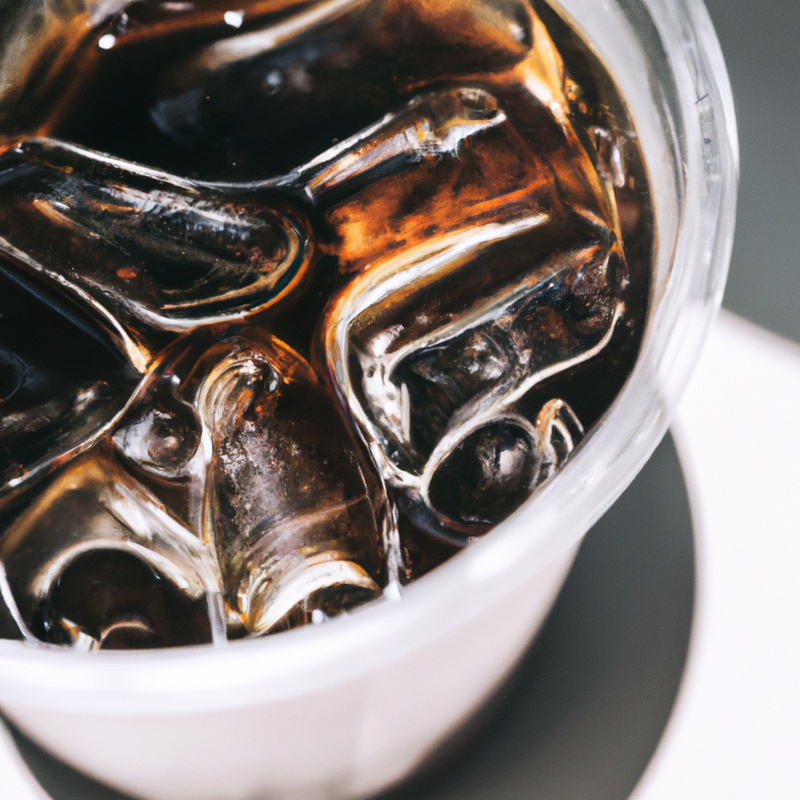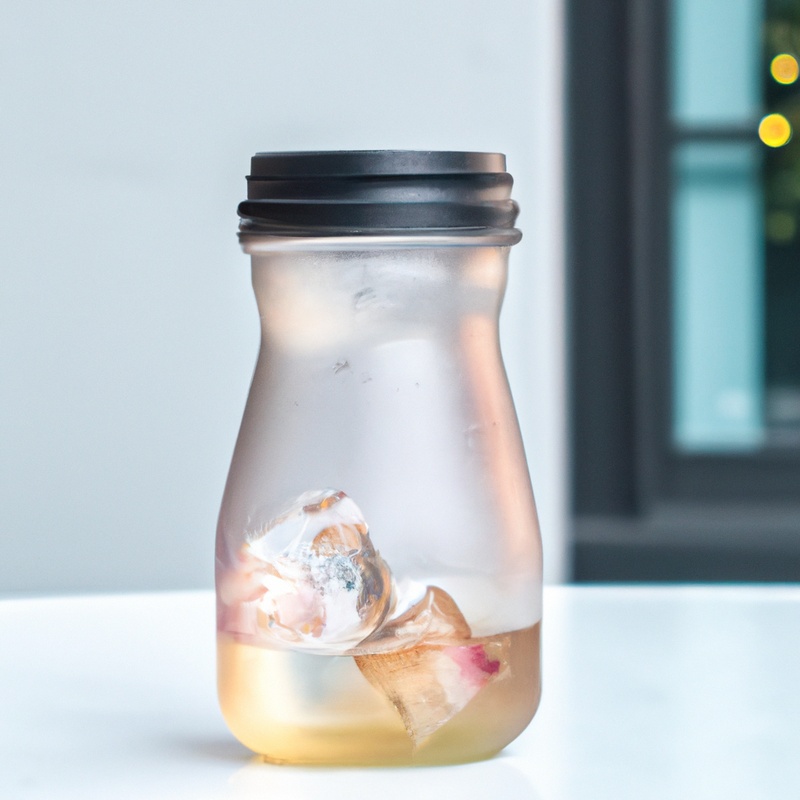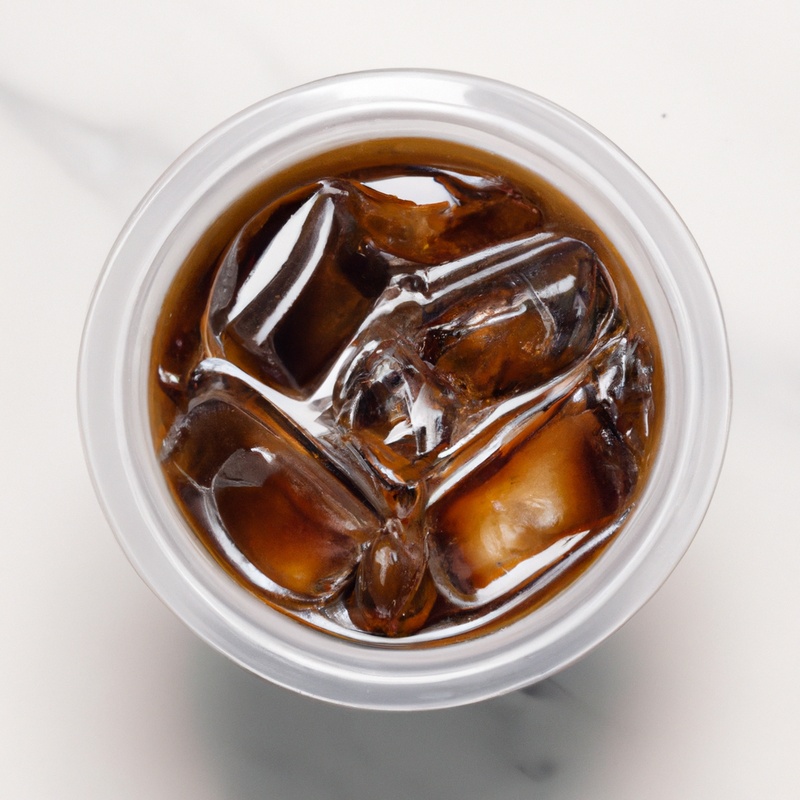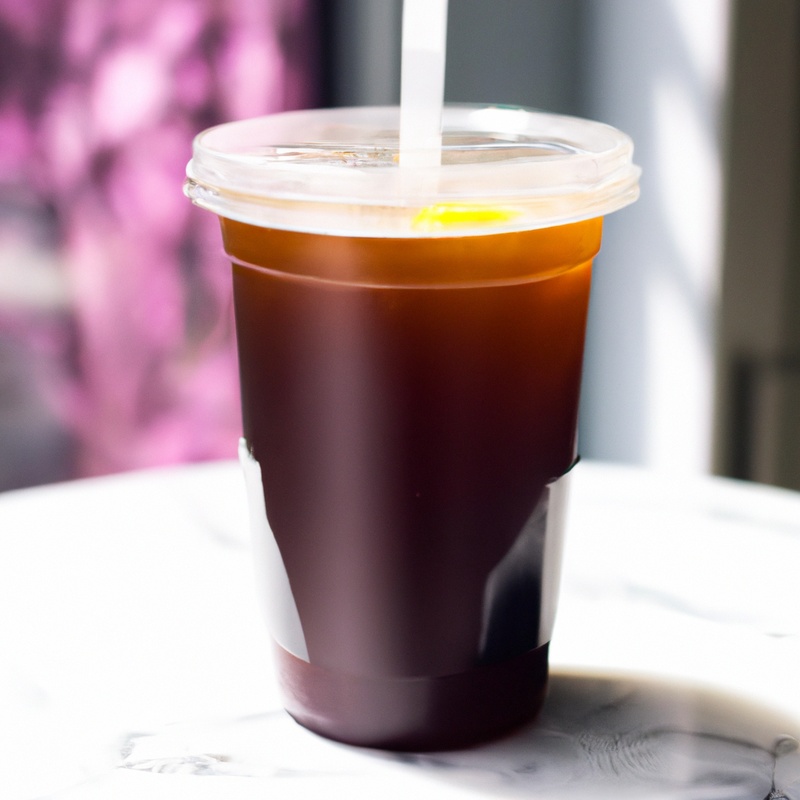Key Takeaways:
- Use a 1:4 coffee to water ratio for the best cold brew flavor.
- Let the coffee steep in the refrigerator for at least 12 hours.
- Strain the cold brew using a fine-mesh sieve or cheesecloth.
- Dilute the cold brew concentrate with water or milk before serving.
Are you tired of your regular cup of hot coffee and craving something more refreshing for those hot summer days? Look no further! In this blog article, we’re going to dive into the art of making cold brew coffee in a mason jar.
Not only will we explore the unique characteristics of cold brew and its health benefits, but we’ll also provide you with a step-by-step guide on how to create this delicious beverage using just a simple mason jar.
So grab your favorite coffee beans and let’s get brewing!
| Ingredients | Instructions |
|---|---|
| 1 cup coarsely ground coffee |
|
| 4 cups cold water |
|
| Optional: flavorings (e.g., vanilla extract or cinnamon) |
|
| |
| |
| |
| |
|
Benefits of Cold Brew Coffee
Enjoy the benefits of Cold Brew Coffee!
What Makes Cold Brew Coffee Unique?
Cold brew coffee is unique because of its brewing method. Unlike traditional hot brewed coffee, cold brew is made by steeping coffee grounds in cold water for an extended period, usually 12 to 24 hours.
This slow extraction process creates a smoother and less acidic coffee with a naturally sweet flavor.
Cold brew coffee is also versatile and can be enjoyed hot or cold, making it a refreshing and satisfying choice for coffee lovers.
Health Benefits of Cold Brew Coffee
Health Benefits of Cold Brew Coffee:
- Lower acidity: Cold brew coffee has lower acidity compared to hot brewed coffee, which makes it easier on the stomach and teeth.
- Less bitterness: The slow brewing process of cold brew coffee results in a smoother, less bitter flavor profile.
- Antioxidant-rich: Cold brew coffee is packed with antioxidants that can help protect against cell damage and reduce the risk of chronic diseases.
- Increased caffeine content: Although it depends on the brewing method, cold brew coffee often contains more caffeine than traditional brewed coffee.
- Hydration: Cold brew coffee can contribute to your daily fluid intake, keeping you hydrated.
So, if you’re looking for a refreshing and healthier alternative to hot brewed coffee, give cold brew coffee a try! Just remember, moderation is key to enjoying its benefits without overdoing it on caffeine.

Equipment Needed for Cold Brew Coffee
All you need to make cold brew coffee in a mason jar are a mason jar and a few additional equipment pieces.
Mason Jar as a Brewing Tool
The mason jar is an excellent tool for brewing cold brew coffee. Its wide opening allows for easy filling and cleaning.
Simply add coarsely ground coffee and water to the jar, then let it steep in the refrigerator for 12-24 hours.
Afterward, strain the coffee to remove the grounds, and you’re left with smooth, rich cold brew. The mason jar is a versatile and cost-effective option for anyone who wants to enjoy homemade cold brew coffee.
Other Equipment You’ll Need
For making cold brew coffee in a mason jar, you’ll need some additional equipment besides the jar itself. Here’s what you’ll need:
- Coarse Ground Coffee: Choose a high-quality medium to dark roast coffee and grind it coarsely for best results.
- Filter: A fine-mesh sieve, cheesecloth, or a cold brew filter bag will help separate the coffee grounds from the water.
- Water: Use filtered water to make the best-tasting cold brew coffee.
- Time: Cold brew coffee takes time to steep, usually around 12 to 24 hours. Plan accordingly.
That’s it! With these few basic items, you’ll have everything you need to make a delicious batch of cold brew coffee right in your mason jar. Enjoy!

Step-by-Step Guide to Making Cold Brew Coffee in a Mason Jar
Here’s a simple step-by-step guide to making cold brew coffee in a mason jar.
Choosing the Right Coffee Beans
When it comes to choosing the right coffee beans for your cold brew, it’s important to consider a few factors.
Firstly, opt for a medium to dark roast as they tend to have bolder flavors.
Secondly, look for beans that are specifically labeled as “cold brew” or “low acid” as they provide a smoother taste.
Lastly, consider experimenting with different origins such as Africa, Latin America, or Asia to discover your preferred flavor profile.
Remember, the quality of the beans will greatly impact the taste of your cold brew, so choose wisely.
Grinding Your Coffee Beans
Grinding your coffee beans is a key step in making delicious cold brew coffee in a mason jar. The right grind size is important for extracting flavor without over-extracting bitterness.
For a mason jar cold brew, aim for a coarse grind like sea salt or breadcrumbs.
This allows for a slower extraction process and a smoother, less acidic brew. Avoid grinding the beans too fine, as this can result in a bitter and over-extracted taste.
Experiment with different grind sizes to find the perfect balance for your personal preference.
Brewing Ratio and Measurements
When it comes to making cold brew coffee in a mason jar, the brewing ratio and measurements are important to get the right flavor and strength.
A common ratio is 1 part coffee to 4 parts water.
For example, you can use 1 cup of ground coffee and 4 cups of cold water.
Adjust the ratio based on your preferences for a stronger or milder brew.
It’s also crucial to use coarse ground coffee to prevent sediment in your cold brew.
Remember to let it steep in the fridge for at least 12 hours.
Brewing Time and Temperature
When it comes to brewing cold brew coffee, the brewing time and temperature are important factors to consider.
For optimal results, I recommend brewing your coffee for 12-24 hours at room temperature.
This allows the coffee grounds to extract flavorful oils and compounds slowly, resulting in a smooth and less acidic brew.
Keep in mind that the longer you brew, the stronger the coffee will be.
As for the temperature, cold brew is brewed without heat, hence the name.
Simply let the coffee steep in cold or room temperature water.

Filtering the Cold Brew Concentrate
Filtering the Cold Brew Concentrate To filter your cold brew concentrate, you will need a fine-mesh sieve or cheesecloth.
Place the sieve or cheesecloth over a clean container or pitcher.
Slowly pour the cold brew concentrate through the sieve or cheesecloth, allowing it to strain out any coffee grounds.
You may need to do this step twice to ensure all grounds are removed.
Once filtered, transfer the cold brew concentrate to a sealed container and store it in the refrigerator for up to two weeks.
Enjoy your smooth and flavorful cold brew coffee!
Storing and Serving Cold Brew Coffee
To store your cold brew coffee, transfer it into an airtight container, like a glass jar with a lid, and keep it refrigerated. This will help maintain its freshness and flavor for up to two weeks.
When you’re ready to serve, dilute your cold brew concentrate with water or milk to your desired strength.
Add ice if desired and any sweeteners or flavors you prefer. Enjoy your cold brew coffee straight up or mixed into delicious beverages like iced lattes or frappes.
Tips and Variations for Making Cold Brew Coffee in a Mason Jar
Experiment with different coffee beans and roasts to find your perfect flavor profile when making cold brew coffee in a mason jar.
Experimenting with Coffee Beans and Roasts
Experimenting with coffee beans and roasts is a fun way to explore different flavors and find your favorite cold brew profile. Here are a few things to consider:
- Coffee beans: Try different types, such as Arabica or Robusta, to see which flavor profile you prefer.
- Origins: Experiment with beans from different regions like Ethiopia, Colombia, or Brazil – they all have distinct flavor characteristics.
- Roasts: Light, medium, or dark roast – each offers a unique taste. Light roasts can have bright acidity, while dark roasts offer a bolder flavor.
- Grind size: Adjust the grind size to influence the extraction rate and strength of your cold brew.
- Brew time: Vary the steeping time to find your desired strength and flavor intensity.
- Taste tests: Take notes and compare the flavors of each batch to identify your preferences.
Remember, there’s no right or wrong way to experiment, so have fun and enjoy the process of discovering your perfect cold brew combination!
Adding Flavor to Your Cold Brew
Adding flavor to your cold brew is a fun way to experiment and tailor your coffee to your taste preferences. Here are a few simple ways to enhance the flavor of your cold brew:
- Sweeten it up: Add a dash of honey, maple syrup, or a flavored syrup like vanilla or caramel to your cold brew for a touch of sweetness.
- Spice it up: Try adding spices like cinnamon, cardamom, or nutmeg to your coffee grounds before brewing. This can give your cold brew a warm and cozy flavor.
- Infuse it with fruit: Add sliced citrus fruits like oranges or lemons, or berries like strawberries or blueberries, to your cold brew overnight. The fruit will infuse into the coffee, giving it a refreshing and fruity taste.
- Experiment with extracts: A few drops of extracts like almond, coconut, or mint can transform your cold brew into a unique and aromatic beverage.
Remember, the key is to start with a small amount of the flavoring ingredient and adjust according to your taste. Feel free to get creative and try different combinations to find your perfect flavored cold brew.
Enjoy!
Adding Milk or Sweeteners
Adding milk or sweeteners to your cold brew coffee is a personal preference and can enhance the flavor. Here are a few options to consider:
- Milk: Adding milk, whether it’s dairy or plant-based, can bring a creamier texture to your cold brew. Experiment with different types of milk to find your favorite combination.
- Sweeteners: If you like your coffee on the sweeter side, try adding a natural sweetener like honey, maple syrup, or agave nectar. You can also use regular sugar or a sugar substitute if you prefer.
- Flavorings: Get creative and add a splash of vanilla extract or a sprinkle of cinnamon for added flavor. Mint leaves or a dash of chocolate syrup can also provide a refreshing twist.
Remember to start with small amounts and adjust to taste. The beauty of making cold brew in a mason jar is that you can easily experiment and find the perfect balance of milk and sweeteners to suit your preferences.
Making Iced Coffee with Cold Brew Concentrate
To make iced coffee with cold brew concentrate, simply mix a small amount of cold brew concentrate with water or milk, add ice, and sweeten if desired.
Adjust ratios to suit your taste preferences.
Experiment with different flavors by adding syrups, spices, or extracts.
You can also use the cold brew concentrate as a base for creative coffee cocktails.
Enjoy your refreshing and flavorful homemade iced coffee!
Frequently Asked Questions about Making Cold Brew Coffee in a Mason Jar
Can I use any type of Mason jar?
Yes, you can use any type of Mason jar to make cold brew coffee.
Mason jars come in various sizes and materials, such as glass or plastic.
The key is to ensure that the jar has a tight-fitting lid to prevent any leaks or spills.
Additionally, a wide-mouth Mason jar is often preferred as it makes it easier to add coffee grounds and remove them later.
So, feel free to use any Mason jar you have on hand for your cold brew coffee making adventures!
How long does it take to make cold brew coffee?
Making cold brew coffee requires time and patience since it involves a slow extraction process. On average, it takes around 12 to 24 hours to make cold brew coffee.
The steeping time depends on personal preference, as longer steeping times result in a stronger and more concentrated brew.
After steeping, you’ll need to strain the coffee grounds and dilute the concentrate with water or milk to your desired strength.
Can I reuse the coffee grounds for a second batch?
You can reuse coffee grounds for a second batch of cold brew coffee. After your first batch, strain out the used grounds and give them a rinse.
Then, simply add fresh water and let it steep again.
However, keep in mind that the second batch may be weaker in flavor. Also, it’s important to note that reusing coffee grounds multiple times can result in a bitter taste, so it’s best to use them for a second batch only.
Does cold brew coffee have more caffeine than regular coffee?
Cold brew coffee generally has more caffeine than regular coffee.
The brewing process involves a longer steeping time, which allows for greater caffeine extraction.
However, keep in mind that the caffeine content can vary depending on the specific beans used and the brewing ratios.
Factors such as the type of roast and the coffee-to-water ratio can also affect the caffeine level.
Final Verdict
Making cold brew coffee in a mason jar is a simple and cost-effective way to enjoy this flavorful and refreshing drink.
The unique steeping process of cold brew brings out the natural sweetness and low acidity of the coffee beans, making it a smooth and enjoyable beverage.
With just a few steps, you can create your own cold brew concentrate that can be stored for days and customized to your taste preferences.
Whether you’re a coffee aficionado or looking for a new way to enjoy your morning cup, cold brew coffee in a mason jar is worth trying.
